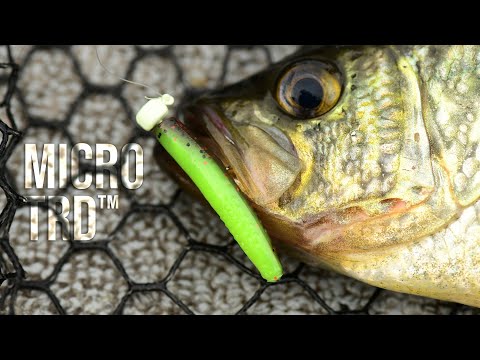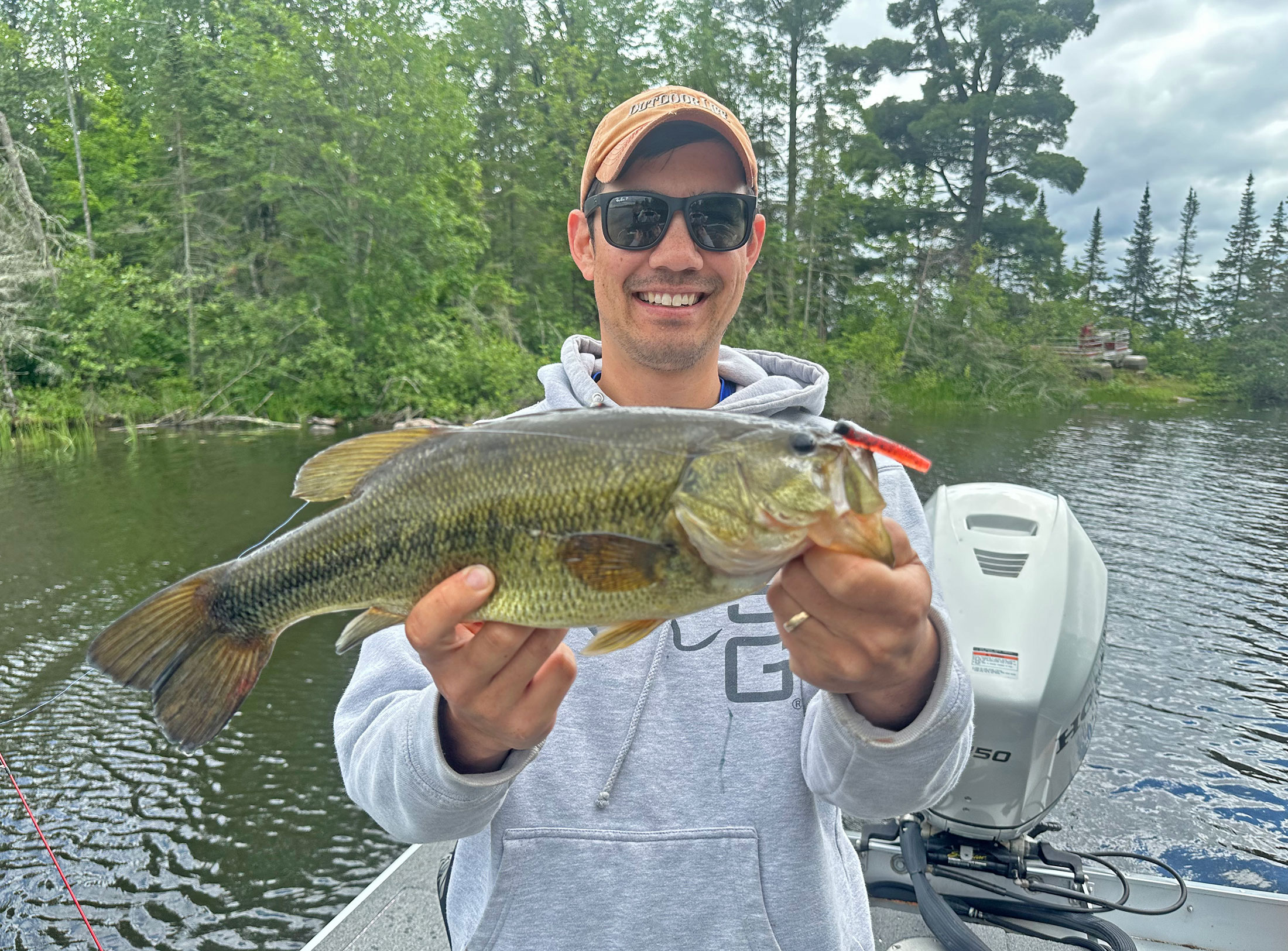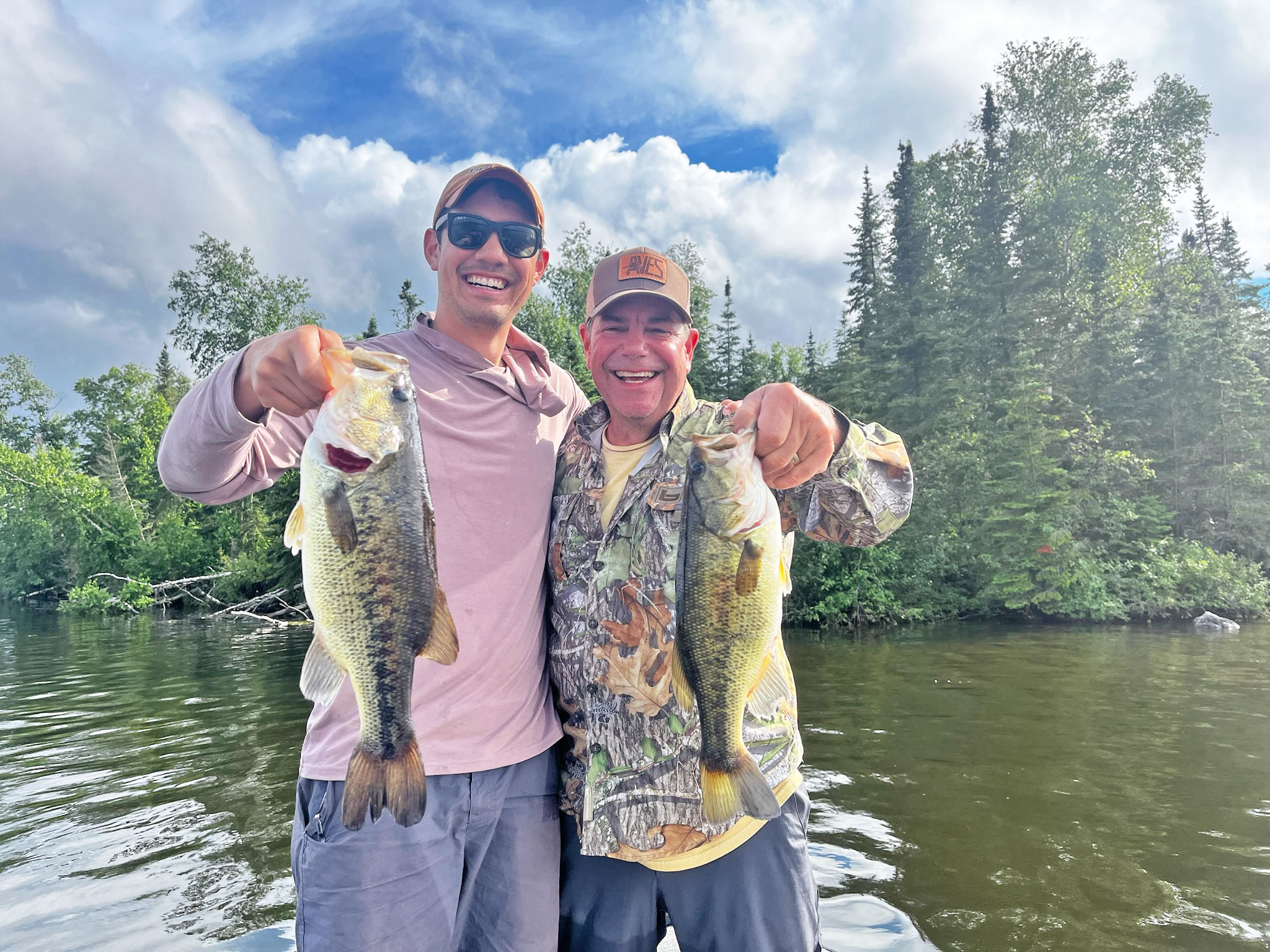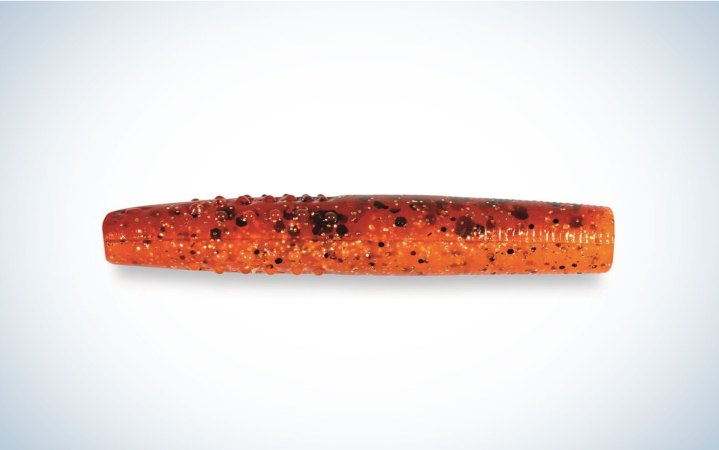Micro Ned Rigs: The Ultimate Bait for Targeting Bluegills and Bass at the Same Time
When it comes to catching large numbers of panfish, it’s impossible to beat a chunk of nightcrawler (or maybe a cricket) hanging under a bobber. But when you’re throwing live bait for panfish, you’re bound to catch a ton of smaller fish along with the occasional keeper. If you want to avoid those dinks, land some nice bluegills, and have the chance at hooking into hard-fighting bass, then consider trading the crawlers for an artificial like the relatively new micro Ned rig bait from Z-Man, the Micro TRD.
I recently fished a Northern Minnesota lake with a Micro TRD and had a blast pulling bluegills from bulrush weeds, downed logs, and boulders along the shoreline. Even though I was targeting panfish, I caught a few nice bass, which put up a heck of a fight on ultralight gear. After a couple days of hot fishing, I learned to love the micro Ned rig as a dual-threat presentation. In fact, it might be one of the best options for anglers who want to target bass and big bluegills at the same time.
Meet the Micro Ned
The Ned rig is a well established bass rig and you can learn all about Ned rig fishing here. Z-Man is largely credited with bringing the Ned to popularity, but more recently they’ve introduced the Micro TRD, which measures just 1.25 inches in length. You can fish this mini plastic with a Micro Finesse ShroomZ jig which comes in a size 4 or 6 hook and weights of 1/10, 1/15, 1/20, or 1/30 ounces. (Standard TRDs are 2.75 inches and the big sizes measure 4 inches).
Just like Z-Man’s full-size TRDs, the micro TRDs are made of ElazTech, which is the company’s proprietary bait material that’s super stretchy, durable, and buoyant. The buoyancy lifts the plastic vertically while the jig head sits on the bottom.
This is a tiny bait for bass, and a hefty bait for bluegills, in other words, just perfect for most lakes in the Upper Midwest where I fish.

Fishing the Micro Ned
You fish this baby Ned just like how you would fish the full-size version: cast it out and slowly drag it along the bottom, giving it occasional little pops along the way. This works best on rocky or sandy bottoms where you won’t drag the little jig into heavy weeds. I found the micro Ned to be especially effective around timber, edges of bulrush weeds, and docks. It would also be a killer tactic for sight fishing big bluegills on their beds. You often get hit as the bait initially drops to the bottom, especially when casting to shoreline structure.
If you’re fishing in heavy weeds, you’ve got to work the bait faster to keep the jig out of the jungle (it’s so light that it won’t punch through any substantial weed cover). Or, you could suspend it under a bobber.
You’ll see some other stories and videos out there of anglers catching massive 10-inch bluegills with Ned rigs. The lake I was fishing didn’t have bluegills of that size, or if it did, I wasn’t on ‘em. But still, 7- and 8-inch bluegills had no problem gulping down the TRD worm. I’d feel a couple light taps and then see my line move ever so slightly. The smaller bluegills might swipe at the bait, but wouldn’t be able to get it in their mouth. Bass would simply thump the bait. That was a good sign to swing with a harder hook set compared to a lighter, sweeping hookset required for panfish.

Photo by Alex Robins
This technique works best on calm days when there’s no strong wind to put slack in your line and there’s no chop on the water to disrupt your presentation. These baits are so light that even a moderate wind can mess up your presentation and make casting a challenge. You need to be able to fish the micro Ned with a taut line so you can feel the bottom and also feel subtle hits.
Rods, Reels, and Line for Micro Neds
This is an ultra finesse technique that requires sensitive gear. But, you don’t need anything fancy. I was using a size 75 Lew’s Laser Lite reel and a 6-foot Fenwick Eagle light, fast-action rod. For line, go with either 4-pound or 6-pound test. I think the ideal setup is 6-pound braid with a 4-pound mono leader. The braid will allow you to feel structure better and see your line more easily which helps with detecting subtle eats.
Read Next: Best Ultra Light Spinning Reels
No matter what gear you choose, you won’t be able to cast these tiny jigs very far so good boat position, near the structure you’re targeting, is key.
And when you do hook a decent-sized fish, you’ll have to play her gently. Fighting a slab bluegill or a 16-inch bass on ultra-light tackle is a fun challenge. Hooking a bigger bass turns into a real rodeo. So keep your drag set moderately loose and be ready to fight fish cautiously. You might lose some fish, maybe even a big one, using this technique, but that drama only amps up the excitement and fun factor.
Read Next: Best Fishing Lines for Crappie
Final Thoughts

Photo by Alex Robinson
The full-sized Ned rig sometimes gets criticized by hardcore bass fishermen for only putting runts in the boat. I’ve found that the micro Ned will catch all kinds of fish — small bass, big bass, bluegills, and anything else. It’s just that in most lakes there are more small bass swimming around than there are big ones. And sometimes, during the heat of summer, anglers just want to get out and have some action (five pounders be damned). For those days, targeting bass and panfish with a micro Ned rig is the perfect tactic.
The post Micro Ned Rigs: The Ultimate Bait for Targeting Bluegills and Bass at the Same Time appeared first on Outdoor Life.






